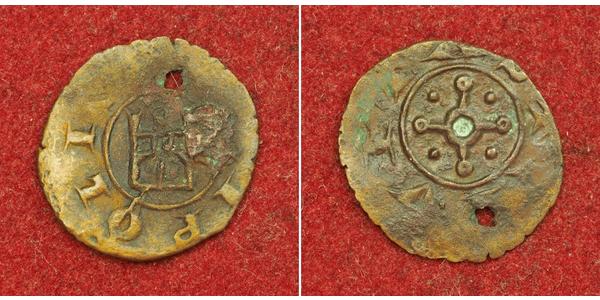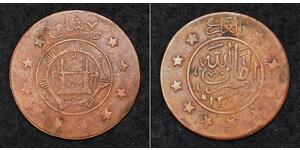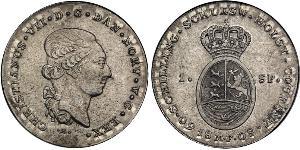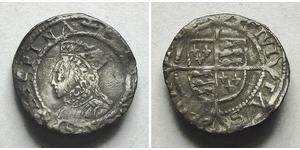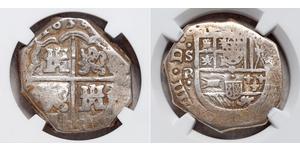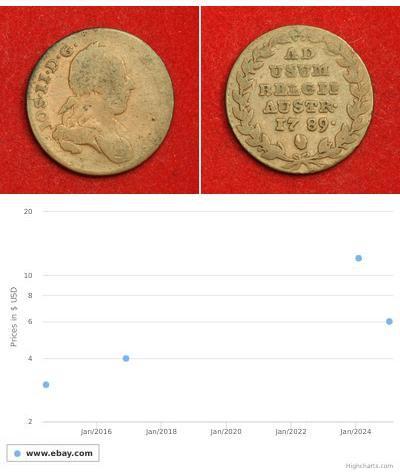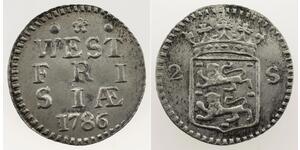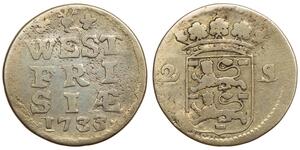(sold for $20.0)
1251, Crusader States, County of Tripoli, Bohemond V. Bronze Pougeoise Coin. R!
Denomination: Pougeoise Mint Period: 1235-1151 AD Ruler: Bohemond V (1233-1251) Reference: CCS 21, Metcalf 557-8. Condition: Environmental damage (corrosion and deposits), small mpiercing, otherwise VF! Material: Bronze Diameter: 16mm Weight: 0.55gm
Obverse: Crenelated tower with arched entry (Genoese gateway). Legend: + TRIPOLIS
Reverse: Cross with central annulet and annulet at end of each arm. Four pellets in quarters. Legend: + CIVITAS
The County of Tripoli (1109–1289) was the last of the Crusader states. It was founded in the Levant in the modern-day region of Tripoli, northern Lebanon and parts of western Syria which supported an indigenous population of Christians, Druze and Muslims. When the Christian Crusaders – mostly Frankish forces – captured the region in 1109, Bertrand of Toulouse became the first Count of Tripoli as a vassal of King Baldwin I of Jerusalem. From that time, the rule of the county was decided not strictly by inheritance but by factors such as military force (external and civil war), favour and negotiation. In 1289 the County of Tripoli fell to Sultan Qalawun of the Muslim Mamluks of Cairo. The county was absorbed into Mamluk Egypt.
Raymond IV of Toulouse was one of the wealthiest and most powerful of the Prince Crusaders. Even so, after the First Crusade, he had failed to secure any land holdings in the Near East. Meanwhile, the County of Edessa, the Kingdom of Jerusalem and the Principality of Antioch had been established. Tripoli was an important strategic goal as it linked the French in the south with the Normans in the north. It was a fertile and well populated area. In 1102, Raymond IV occupied Tortosa (now Tartus) and in 1103, he prepared, together with veterans of the 1101 crusade, to take Tripoli.
On a natural ridge, which he named "Mons Peregrinus" (French: Mont Pèlerin, English: Mount Pilgrim), 3 kilometres (1.9 mi) from Tripoli, Raymond IV (also known as Raymond de Saint-Gilles) began the construction of a large castle, known in Arabic as Qal'at Sanjil. Despite this new fortress and seasoned troops, Raymond IV's siege of Tripoli failed to secure the port. He died on 25 February 1105.
Count William of Cerdagne, Raymond IV's cousin and comrade, was supported by Tancred, Prince of Galilee, but his succession in the Tripoli campaign was challenged by Raymond IV's illegitimate son, Bertrand of Toulouse. Bertrand of Toulouse, who was supported by Baldwin I of Jerusalem, arrived in the Near East with a substantial army and a large Genoese fleet. In order to resolve the succession issue, Baldwin I created a partition treaty. It specified that William was to hold northern Tripoli and pay homage to Tancred while Bertrand was to hold south Tripoli as a vassal of Baldwin. mUnder a united Christian onslaught, Tripoli fell on 12 July 1109, completing the Kingdom of Jerusalem. When William died of an arrow through the heart (some claim it was murder), Bertrand became the first Count of Tripoli.
The extent of the County of Tripoli was determined in part by pre-existing Byzantine borders and in part by victory in battle, tempered by the demands of neighbouring crusader states. At its height, the county controlled the coastline from Maraclea in the north to Beirut in the south. Inland, the county's control extended to the Krac des Chevaliers fortress. The rich inland agricultural land of the Homs Gap was known as La Bocquée. The county was divided into 'lordships'; areas based roughly around its coastal ports. The Count of Tripoli himself held the port of Tripoli and its surrounds. He also controlled the hostile region of Montferrand, now modern-day Bar'in, Syria, lying to the east. Approximately one quarter of the land seized around Tripoli was given to the Genoese as payment for military aid. The Genoese admiral Guglielmo Embriaco was awarded the city of Jubail.
Despite his contribution to its establishment, Baldwin I did not directly control the County of Tripoli. Nevertheless, the County of Tripoli owed fealty (allegiance) and homage (declarations of allegiance) to him, and he, in return, provided support to the county in times of trouble.
Although occupying a narrow coastal plain, the mountain range beyond was a natural defensive line for Tripoli. Several castle forts were built to defend the mountain passes. Muslim forces (Turk and Egyptian) attacked the County of Tripoli along its borders, especially those to the east. (p73) In 1137, Raymond II, the reigning count, lost control of Montferrand. The Muslim position strengthened when the Hashshashin (Nazari Ismailis) forces formed in the Nosairi mountains to the north. In 1144, in order to increase the county's defences, particularly against Zangi of Mosul, Raymond II gave the Knights Hospitaller large stretches of frontier land along the Buqai'ah plain. This included the castles of Krak des Chevaliers, Anaz, Tell Kalakh, Qalaat el Felis and Mardabech. (p30) In the 1150s, the defences were further strengthened by the presence of the Knights Templar at Tartus on the seashore.
Bohemond V of Antioch (1199 − January 17, 1252) was ruler of the Principality of Antioch, a crusader state, from 1233 to his death. He was simultaneously Count of Tripoli.
Bohemond V was the son of Bohemund IV of Antioch and Plaisance of Gibelet. Like his father before him, Bohemond had a notorious dislike for the Knights Hospitaller and the neighbouring Kingdom of Armenia, preferring an alliance with the Knights Templar. Peace with Armenia was assured only shortly before his death, with the mediation of Louis IX of France.
In 1225, Bohemond was married to Cypriote queen dowager Alice of Champagne. Their childless marriage ended in annulment after July 5, 1227. His second marriage was in 1235 to Luciana di Segni, a great-niece of Pope Innocent III. He had two children:
- Plaisance of Antioch, a daughter who became the third wife of King Henry I of Cyprusin 1251.
- Bohemond VI of Antioch
Bohemond V died in January 1252. Since his son and successor was only 15 at the time, he succeeded under the regency of the Dowager Princess, Luciana. However, Luciana never left Tripoli, and instead handed over the government of the principality to her Roman relatives. This made her unpopular, so the young Bohemond VI gained the approval of King Louis IX of France, who was on Crusade at the time, to get permission from Pope Innocent IV to come of age a few months early.

|
Posted by:
anonymous 2019-04-29 |
2 Stuiver Netherlands Silver
group has 33 coins / 33 prices
⇑

